Telescopic Surf Casting Fishing Rods with great mechanical advantage in casting.
3.9 meters Surf Rods
4.2 meters Surf Rods
4.5 meters Surf Rods
5.4-6.3 meters Surf Rods
Several helpful Tips
How to extend and insert telescopic rod?
If rod sections get stuck at a joint?
Take a good care of your rod
Surfcasting is a fishing method to cast a bait or lure as far out into the water as is necessary to reach the target fish from the shore. Two-handed casting techniques are used to cast the lure or bait the added distances required in many cases to reach feeding inshore fish. Beachcasting is a method to cast out to sea a lead weight between 120g and 200g from the beach or shoreline, or by wading into the shallow waters and casting out into or beyond the breaking waves using very long fishing rods, from 12 and 21 feet. Bait used in this form of fishing might include artificial flies or spinners, limpets or mussels, sendworm or bludworm, sandeel, or squid, peeler crab or fish.
Surf casting rods look like oversized spinning rods or
bait casting rods with long grip handles for
two-handed casting techniques. Surf casting rods are from 10 to 18 feet (3 - 5 m) in length; they have to be longer to be able to cast the lure or bait beyond the breaking surf where fish likely pray, and strong enough to cast heavy lures or bait needed to hold the bottom in rough water. They are used in
shore fishing from the beach, rocks or other shore feature or sea fishing from the shoreline. The
length of the rod depends on how far and what weight of lure you want to cast, let say a 12ft surf-casting rod will easily allow you to throw a 2- to 4-oz lure more than 200 feet.
The advantage of long surf rod is great casting distance. Also it helps to fight the big game fish without breaking a
fishing line. When a fish attacks or takes off running you can allow the fish to make very short runs to 5 or 6 ft with just the rod, not using a line. You have much more control on the fish and it allows you to use lighter line with a longer rod. With shorter rods you need to use heavier line that kills casting distance and is senseless. You can also break heavy line a lot easier with a short rod than you can with a long one.
These rods are made of a
Higher Modulus Graphite Carbon manufactured in Japan, using Japanese Design, Engineering and Technology. They are compact, provide superior portability, yet extremely flexible. Lightweight blanks are incredibly sensitive and will detect the slightest bites, and still will have enough strength to land the hardest fighters.
Surf casting rods can be used for targeting a wide variety of species from surf and shore, like extremely popular
Striped Bass and
Bluefish. This species can be fished from shore and ranges in weight from a few pounds to the common range of 30 to 40 lb (15 kg) and even more. The surf rods are great for Red Drum / Red fish,
Black Drum,
Tautog / Blackfish,
Flounder / Fluke,
Black Sea Bass,
Bonefish,
Atlantic Bonito and
Albacore Tuna, Pompano and Spanish Mackerel, Sharks and Weakfish (Sea Trout), Snook and Tarpon.
How to cust with surf custing rod.
1. The cast begins by bringing the rod up and over the shoulder to about 2 o'clock (make sure to check behind you first). Your leading hand should end up at shoulder height. Also turn your head and watch the lure.
Shift your weight to your back leg. This will drop the rod tip a bit.
2. Then forcefully pull the rod straight up over your head using the right hand. Push the butt end down with the left hand. As you are doing this, shift your weight to your forward foot to help give the cast more momentum. Keep your eyes on the lure during the entire cast.
3. Given enough power the rod tip will bend as it moves overhead. This helps propel the terminal tackle forward. However, because surf casting rods tend to be very stiff the power, and hence the distance, of the cast is highly dependent on the power you put into it with your arms. That is why surfcasting requires some strength.
4. As the lure passes over your head and reaches 11 o'clock release the line from your index finger to allow the lure or bait to move freely towards the target area. The rod should follow through a bit toward the target. When the bait hits the water slow the release of the line.
Several helpful Tips
Never lift your catch, always play with the fish and use landing net to land it. Always extend and insert telescopic sections very gently, try do not extend them too forcibly, try to keep it off the ground to avoid dirt getting into the joints. Wipe it clean with a cloth before taking it down so you don't jam dirt into the joint, rinse rod with freshwater after using it in saltwater as soon as you can. Always remember to
take a good care of your rods and they will work for you for a very long time and will bring you large amount of catches and a huge amount of great emotions. More great emotions - longer and healthier is your life.
You should open and close the rod with a special care, always keep control of the rod sections. Telescopic rods can easily take even very heavy load, they are very strong and durable but they need to be handled with cared too. They usually don't break while fighting the fish but they could break while they are being closed without special care. Opening and closing these rods must be done very carefully and gently, no sideway pressure should be applied to the rod while closing it.
Opening Telescopic Rod.
Telescopic rods are very simple to open, but there are a couple of points to keep in mind to simplify the process and avoid damaging the rod:
- Uncover and remove the cap of guide along a line, otherwise it may break the fishing rod. Drill the fishing line through the bottom guide to the top guide through every guide. Any guide missing drilling may result in breaking the top end. If the fishing line is in disorder, don't draw the line forcibly. Dragging too forcibly on any point of the fishing rod may result in the break of fishing rod.
- Expose Section by section out the fishing rod from top, and screw the joint of two sections till they are tightly fixed.
- When fully pulling out the rod, align all the guides.
Closing Telescopic Rod.
Telescopic rods are closed in the opposite direction, starting with the bottom section and collapsing them all the way to the tip one. It's recommended to hold each section at its thickest point of the section which is near the joint.
If rod sections get stuck at a joint:
Occasionally a section may get stuck. The most frustrating things that can happen to a telescopic fishing rod (after braking) is to become jammed at a joint. This can happen due to dirt/mud/sand in the joint but the main cause of the joints fixed too tightly is extending the rod too forcibly.Prevention is better than cure: try do not extend the rod too forcibly, try to keep your rod off the ground at all times to avoid dirt getting into the joints. Wipe it clean with a cloth before taking it down so you don't jam dirt into the joint. If you've been using it in saltwater give it a quick rinse with freshwater as soon after use as you can. Its a good idea to put a protectant like WD-40, Tackle Guard or a silicon lube on the joints.
When it happens there are several techniques to unstick the sucker.
-
A.
| Try to force the thinner section in by twisting them, hold the anti-sliding place near joints with the fingers and screw and press sections in reverse direction to loosen the joints but again make sure not to use sideway pressure. You might try using rubber pads to increase the grip. Always hold sections with your fingers close to joints. |
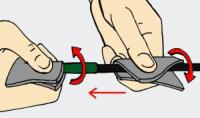
|

|
Have a partner hold one side of the joint while you hold the other and gently twist and press sections without using sideway pressure. Both of you hold sections with your fingers close to joints. |
C. If the hot water technique fails try the next step up. Do the same as above but put ice on the small side of the joint to shrink it. This is easiest if you get some ice from your freezer place it on a cloth or towel and then wrap that around the rod and hold it while you heat the other side with hot water.
D. Try a penetrating lubricant like WD-40, CRC or Tackle Guard. Leave the joint to soak for an hour or two and then try gently to take the rod down.
E.
| If the tip section is stuck, keep the stuck section at the joint, put the bottom of the rod on a flat not-too-hard surface (put towel or other soft material), hold the fixed joints and lightly tap the stuck section against the bottom. You can try to combine it with a lubricant or a hot water: pour hot water on large side of the joint and lightly tap the stuck section against the bottom. Always remember to do it very gently, not to apply any sideway pressure, hold larger section with your palms and thinner section with fingers close to joints. Once the section becomes lose it will slide down. |
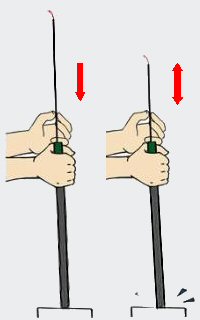
|
Back to top
Take a good care of your rod.
| Rod maintenance has nothing to do with rod breakage. Anglers will always find ways to break their rods, starting from regular (car doors) to very stupid (standing on it) or while fighting a huge fish. What should or should not be done to keep our fishing tackle in good shape and ensure many years of fishing enjoyment? |
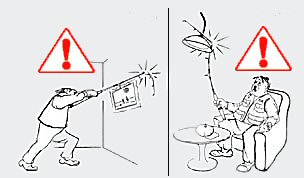
|
-
1.

|
Never lift your catch, always play with the fish and use landing net to land it. Never raise your rod high with the large fish, keep your handle angle at about 45 degrees or less. All graphite rods, are at risk of breakage if the rod is "high sticked". When the tip of the rod is raised too high, the weaker tip section bears too much of the load and can easily break. |
This is one of the most common causes of breakage and is 100% angler-caused
.2.
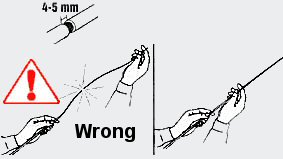
|
Always extend and insert telescopic sections very gently, try do not extend them too forcibly, try to keep it off the ground to avoid dirt getting into the joints. |

|
4. Be extra careful when getting your fishing rod out of the car, especially if it is a graphite rod. Too many people break their rod on the car door.
5.
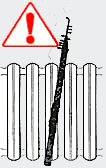
|
Don't remain the fishing rod in the back carriage of car for a long time. The long time sealed and high temperature or very low temperature conditions are harmful for fishing rod. |
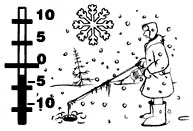
|
|
6. Always pay attention when fishing under or near the high voltage wire because of electrical shock potentiality by high voltage wire and thunder. Carbon fiber is high electricity-conductive material, so it is very dangerous if it touches electrical wire especially when you are close to the water. |

|
8. If you seal up the damp or sordid fishing rod, the moisture will possibly cause the bubbling or scaling off of lacquer. To prevent this, always rub off the moisture on fishing rod and keep it in a ventilated place. Never store a rod in its tube. Humidity can cause the moisture.
9. Always rub off the moisture, salt and dirt before storage.
| 10. Never use brush, toothpaste, gasoline, dope and other organic substances to clean the fishing rod, it may occur damage to rod surface and even the rod itself. Don't clean the rod by steel brush. You shall gently remove the dirt, any remaining "fish stuff" or salt by towel, soft brush or cloth dipped with a little soap and water, and after it is dry completely, brush up with car wax or leather. This will make it easier to clean and help preserve the rod's finish. Wiping the rod down with furniture polish after each use is a good way to keep it looking its best. |
 
|
Always remember to take a good care of your rods and they will work for you for a very long time and will bring you large amount of catches and a huge amount of great emotions. More great emotions - longer and healthier is your life.
Back to top


































